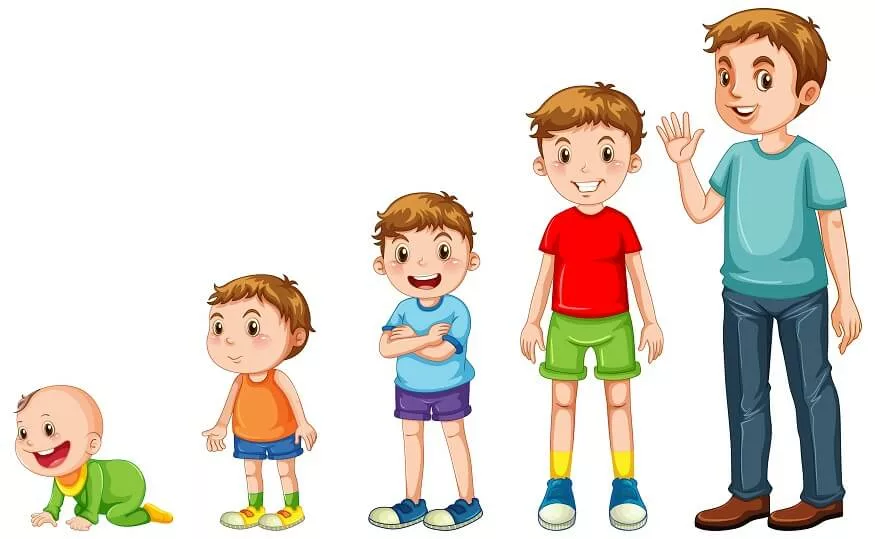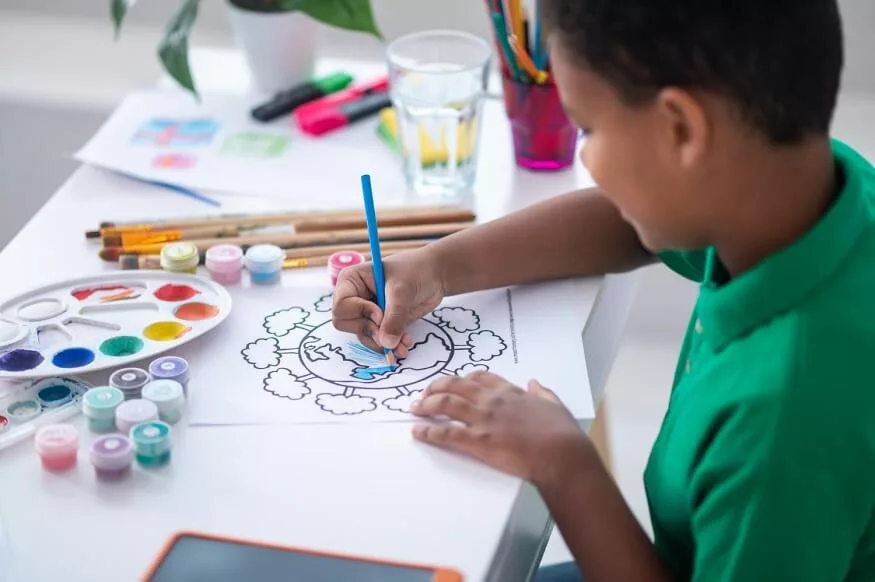The journey of child development encompasses physical, cognitive, and socio-emotional growth that starts from birth through adolescence. Each stage of growth is distinguished by unique changes. Recognizing these milestones can help parents, and teachers, ensure optimal learning and conditioning for their children’s development.
In this blog, we will understand the five stages of childhood development and explore practical ways to foster children’s growth at each stage effectively.
Also Read: Tips for Child Development in the First 5 Years
5 stages of child development
1) Infant (0-12 months)
Infancy is the age of remarkable growth and exploration. During this stage of early childhood development, infants not only double the birth weight physically, but also experience rapid social abilities, including recognizing voices, familiar faces, and basic hand-eye coordination.
At this stage, cognitive, emotional, and social developments are running in parallel. To nurture growth in these areas, you can engage in activities such as talking, cuddling, singing, and reading, fostering a safe and pleasant environment for exploration. Offer lots of age-appropriate toys, colourful textures and objects for their sensory development.
Children develop an attachment with their parents at this stage which is crucial for their emotional development. To foster this bond, parents must respond to their needs promptly, practise skin-to-skin contact, establish eye contact frequently and use gentle touch to build trust and connection.
Even before they can speak, infants start communicating their needs by crying and babbling and most often, quieten down when spoken to. This is a sign that they are absorbing language at this stage. Infants in the age group of 6-9 months, start imitating sounds, smile and between 9-12 months start to respond and communicate with gestures. Hence parents need to keep talking to them plenty and engage in simple conversations with them. Reading out loud to them and using facial expressions also help in building their communication skills.
Also Read: How to Help Your Kid Kick the Thumb-Sucking Habit
2) Toddler (1-3 years)
The toddler stage is characterised by increased independence and an increase in physical activities such as running and climbing. It is the stage where language development accelerates, and children begin to express their emotions and thoughts more clearly. As their vocabulary expands, toddlers can name objects, people and familiar things around them. As they gradually progress in their communication from babbling, toddlers can produce recognizable words. By the age of 2, most toddlers can say around 50 words, and by 3, they may have a vocabulary of hundreds of words.
At this stage, parents must foster growth by providing engaging toys, playing interactive games, reading books, and allowing them to help with simple tasks. Toddlers are keen observers and hence quickly absorb information from the environment around them. They often pick up on the facial expressions, body language and emotions of those around them. It is important to engage them in continuous conversations, respond to their questions and encourage them to convey their needs in short sentences. Pointing, nodding, shaking their head and waving are some of the non-verbal ways in which toddlers communicate.
To develop their cognitive abilities, parents need to engage them in creative play at this stage. Play activities such as building blocks, solving puzzles, drawing, and making art and craft helps them think imaginatively and they learn to differentiate between colours and recognize letters and different shapes.
Parents must provide toddlers with opportunities to make friends and build their social skills. Take them to a park, arrange for playtime at home, enrol them in preschool and involve them in group activities.
3) Preschool (3-5 years)
Preschool years witness tremendous growth in social and emotional development. Children learn to share, take turns, express empathy, and form peer relationships.
Effective nurturing strategies comprise active play, teaching about feelings and emotions, encouraging imagination through pretend play, and setting limits with consistent discipline.
At the age of 3, children get inquisitive and hence engage a lot more in exploration and play to make sense of the environment around them. They start speaking in more complex sentences and develop a larger vocabulary. They start to assert their independence and take on tasks such as dressing, eating and using the toilet themselves.
To foster growth at this stage, parents must allow preschoolers to perform age-appropriate tasks on their own. It could be picking out their clothes, tidying up their play areas, or setting the table.
Encourage physical activities like running, jumping and climbing to foster their gross motor skills. Encourage them to talk about their day or how they feel about certain situations. This will not only cultivate their emotional intelligence; it will also develop their language and comprehension.
Also Read: 10 reasons why you should enrol your child to international preschool
4) School (6-12 years)
During the school-age stage, children become increasingly independent, taking up more complicated tasks and responsibilities. They start to form more complex friendships, understanding the concept of rules and fairness.
Foster growth at this stage by maintaining open communication, supporting academic learning, promoting physical activity, encouraging friendship, and teaching values.
Encourage them to take on responsibilities, make age-appropriate decisions, and learn from their mistakes. As they go through school every day, they are likely to encounter various forms of relationships and face emotional challenges. Be empathetic listeners as parents and encourage them to express their emotions. This will enable them to recognise and articulate their feelings to you.
5) Adolescence (13-19 years)
Adolescence marks the onset of puberty. At this stage of development, adolescents develop a sense of self-awareness. However, as they seek independence, adolescents often grapple with emotional outbursts, self-esteem issues, and the desire to fit into social groups.
To foster growth at this stage, parents and teachers must engage in meaningful conversations about challenging topics such as drugs or sex education, promoting a positive body image, and providing emotional support.
At this stage of development, parents must encourage open communication, be approachable, and be non-judgmental. This will make them feel comfortable discussing their challenges with you. Adolescence is the stage when children start to feel peer pressure and they make quick decisions. Equip them with the knowledge, skills and ability to make informed decisions, especially in the area of academics, health and relationships. Respect and support their beliefs, interests and passion while encouraging open communication about your expectations and boundaries. Offer emotional and financial support when needed.
Also Read: Six Stages of Kohlberg’s Theory of Moral Development
Conclusion
Child development is a continuous and intricate process that can shape a child’s entire life. Understanding the stages of child development allows parents and caregivers to support their children’s physical, cognitive, and socio-emotional growth effectively. Developing this understanding and offering their love, support and encouragement in fostering the child’s growth at every stage will help children become well-rounded individuals.










